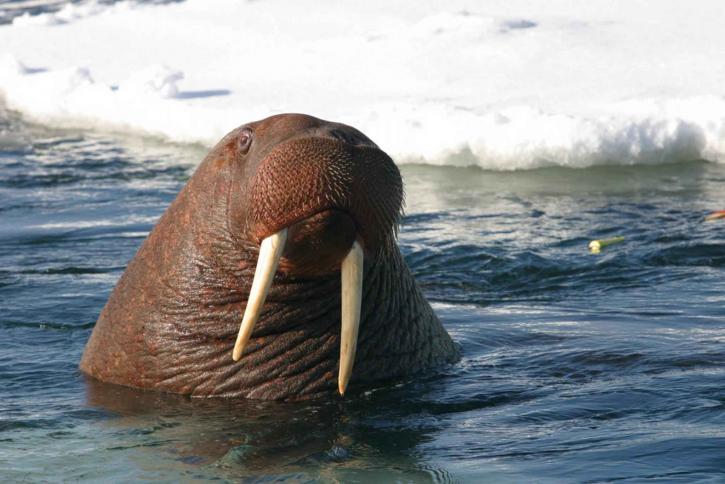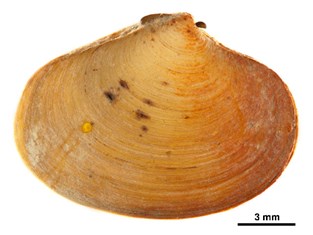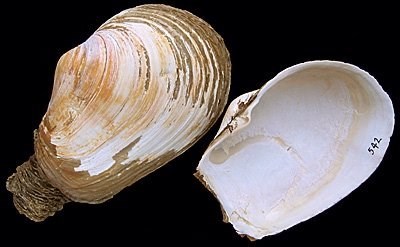
INTAROS collaborator Mikael Sejr, Aarhaus University, Denmark, recently published new research exploring the impacts of climate change on marine food webs in Young Sound, NE Greenland.
Marine food webs are typically complex, requiring primary consumers who can transform organic material in the environment into food for higher level consumers and predators. Primary consumers such as the benthic (living on or in the sea bed) bivalves such as clams (Astarte moerchi and Mya truncata) transform tiny single celled algae, diatoms, dinoflagellates, and dissolved organic material from the environment into food that is available for higher consumers and predators such as walruses. The availability of nutrients for these clams as well as their ability to assimilate these nutrients, in turn affects the availability and quality of food available higher up the food chain.

Astarte moerchi - courtesy of Bold Systems.
Warming temperatures leads to a decrease in sea ice cover, extent and thickness, and increased freshwater input to the Arctic system. Freshwater inputs can have different influences on the system: terrestrial run-off can increase turbidity, reducing light penetration for primary producers (plants), while glacier melt can release additional nutrients to the system.
This study looked at how seasonal changes affect benthic bivalves. Understanding the seasonality and availability of nutrients for these tiny creatures allows us to develop an understanding of the fundamental inputs to the entire marine food web, as higher order predators, such as walruses, feed on these bivalves.

Mya truncata - courtesy of Wikipedia.
The wildlife in Young Sound has adapted over many thousands of years to long periods of ice cover and short periods of nutrient availability. A moerchi is particularly well adapted to these conditions, while M truncata is slightly less so.
Climate change will bring shorter periods of ice cover and longer periods of freshwater input to Young Sound. Although these changes will increase primary productivity in the inner fjord, the changes in ice cover regimes will interrupt the process by which these resources sink in the water column, and become available to benthic organisms. Eventually, although primary production will be higher, the availability of light and nutrient availability at greater depths will be curtailed, with negative impacts on the animals living on and in the sea bed, as well as the animals that feed on them.
You can read the full article here or follow the DOI link below:
Bridier et al. (2019) "Coastal waters freshening and extreme seasonality affect organic matter sources, quality, and transfers in a High Arctic fjord (Young Sound, Greenland)." MEPS 610:15-31 DOI: https://doi.org/10.3354/meps12857
29 May 2019